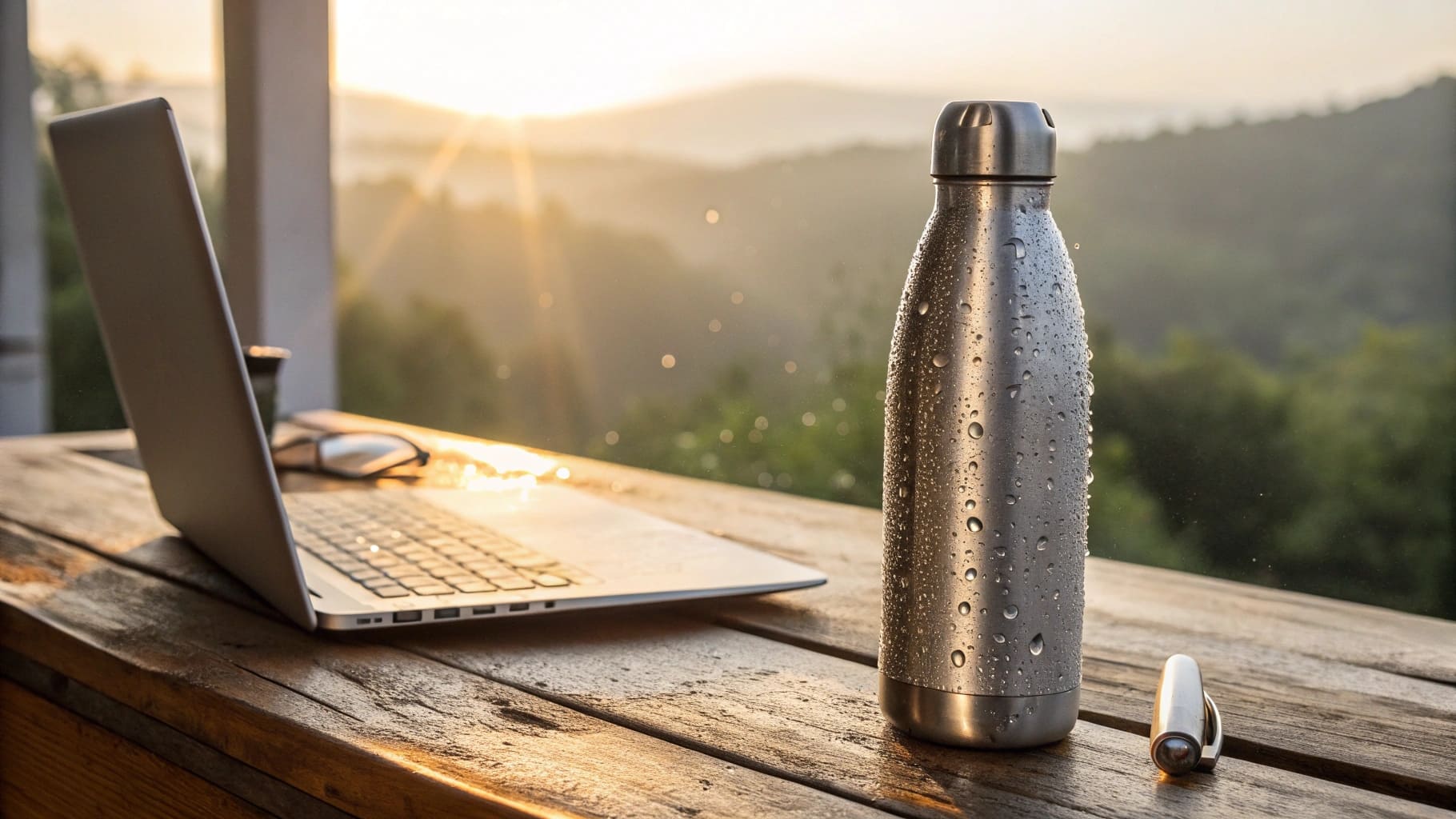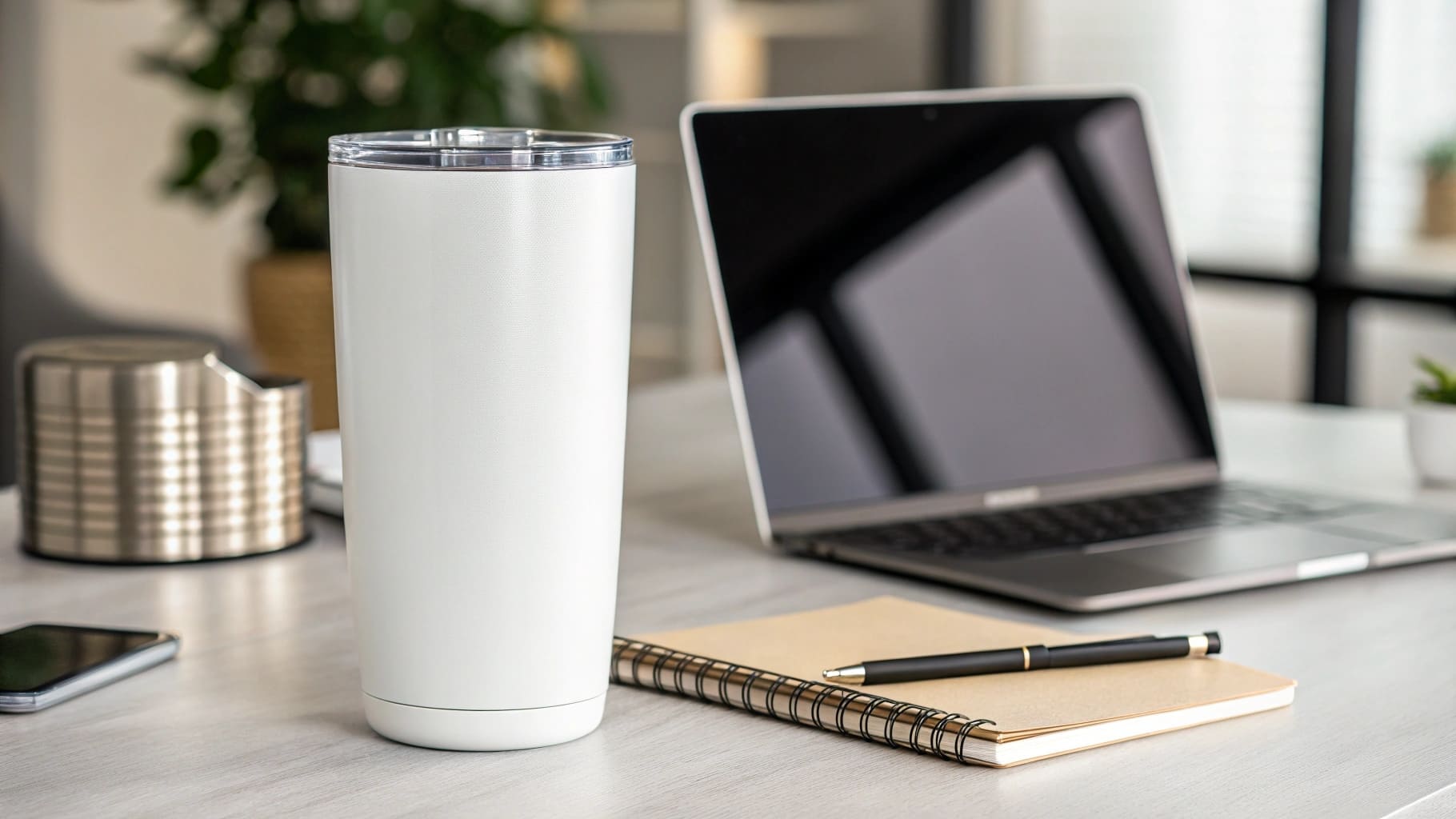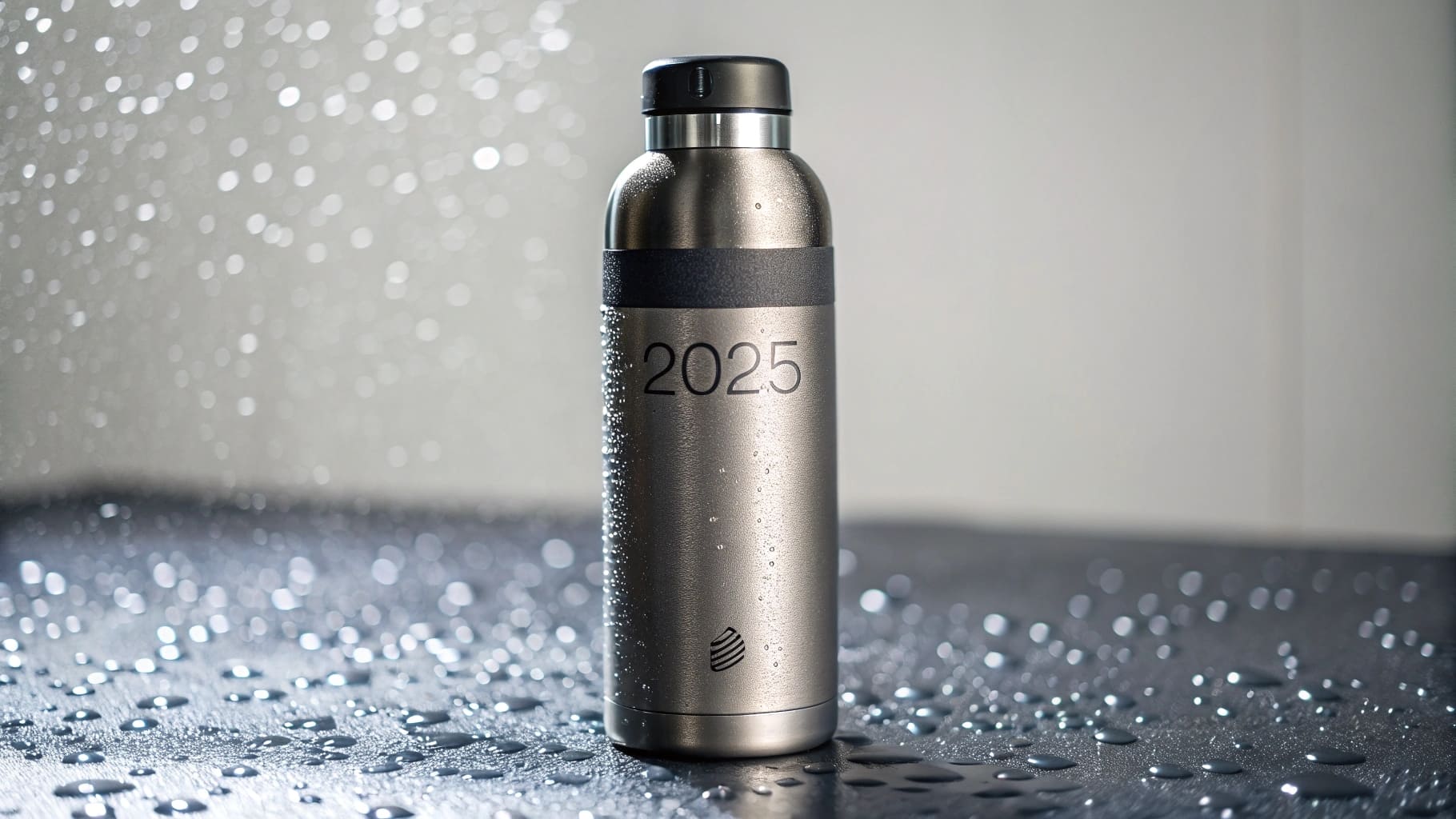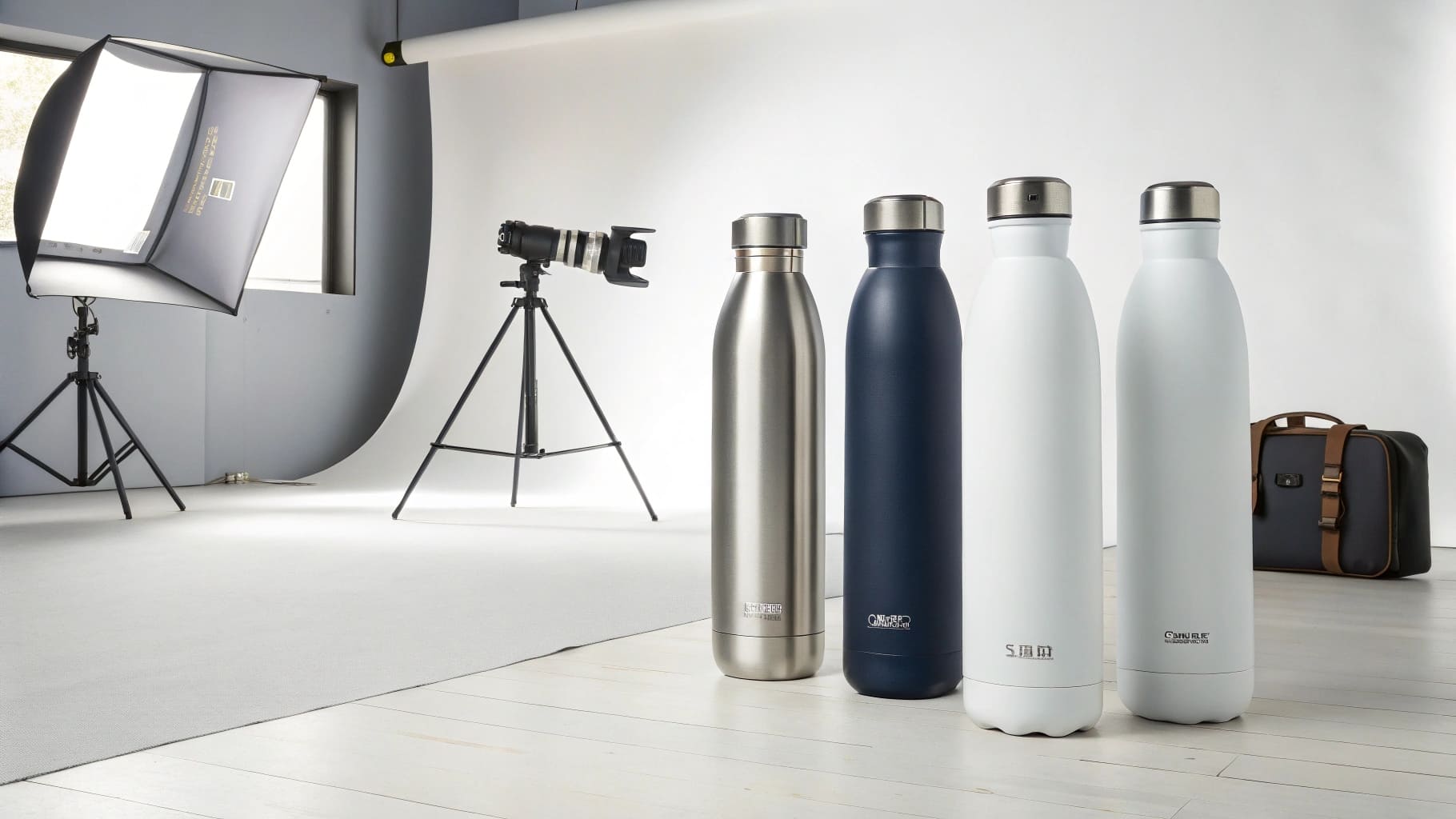Are you worried about what your child drinks from? Many bottles contain hidden chemicals. Insulated stainless steel bottles offer a pure, safe, and durable choice for kids.
The best and safest insulated stainless steel bottles for kids use 18/8 food-grade stainless steel. This material doesn't leach harmful chemicals, is easy to clean, and very durable. Always check that lids and straws are also made from safe, BPA-free materials.

Choosing the right water bottle for a child can feel overwhelming. There are so many options. You want something safe, but also practical and long-lasting. As a manufacturer, I've seen firsthand what goes into making a truly good kids' bottle. It's more than just the main material; it's about the entire product and the trust you can place in its production. Let's explore what makes a stainless steel bottle the top choice for your little ones, and what you, as a buyer, need to look for.
Is a stainless steel water bottle safe for kids?
Parents constantly ask: "Is this material truly safe for my child?" With so much information out there, it's easy to feel unsure. Let's clear up the doubts.
Yes, a high-quality stainless steel water bottle, particularly one made from 18/8 or 304 grade, is very safe for kids. This type of steel is non-toxic and doesn't leach chemicals.

When we talk about stainless steel for food and drink, we're usually referring to specific grades. For kids' bottles, 18/8 stainless steel1, also known as 304 stainless steel, is the industry standard. Let me break down why.
What is 18/8 Stainless Steel?
The numbers "18/8" refer to the composition of the steel: 18% chromium and 8% nickel.
- Chromium is vital. It forms a passive, protective layer on the steel's surface when exposed to oxygen. This layer is what makes stainless steel "stainless" – it resists rust and corrosion. This is super important because you don't want rust getting into your child's drink.
- Nickel enhances the steel's formability and durability. It also contributes to corrosion resistance, especially against acidic substances.
This combination makes 304 stainless steel a very stable and robust material. It's called "food-grade" because it has been tested and proven safe for contact with food and beverages.
Why is 18/8 Stainless Steel Inherently Safe for Kids?
The biggest advantage of 18/8 stainless steel is its inert nature.
- No Chemical Leaching: Unlike some plastic bottles that might contain BPA, BPS, or phthalates, 18/8 stainless steel doesn't leach these or any other harmful chemicals into liquids. This holds true even if the bottle contains warm drinks or acidic juices like orange juice.
- No Flavor or Odor Retention: Stainless steel doesn't absorb flavors or odors from previous drinks. So, water will taste like water, not like yesterday's juice. This makes it more pleasant for kids to use.
- Resistant to Bacteria: The smooth, non-porous surface of stainless steel is less likely to harbor bacteria compared to plastics, especially if the plastic has scratches.
As someone who supplies these bottles to businesses like yours, I always emphasize that starting with high-quality 18/8 steel is non-negotiable for children's products. It's the foundation of a safe bottle.
What kind of water bottle is best for kids?
Choosing a kids' water bottle feels like a big decision. With so many types, colors, and features, how do you pick the best one? You want something they'll love and use.
The best kids' water bottle is durable, easy to clean, and leak-proof. Most importantly, it must be made from safe materials like 18/8 stainless steel with BPA-free lids.

While 18/8 stainless steel for the bottle body is a great start, other features determine if a bottle is truly "best" for a child. As a procurement officer or business owner, like Mark Shenng, you'll want to consider these details to satisfy your customers.
Material Safety – Beyond the Bottle Body
The lid, straw, and any seals are just as important as the bottle itself.
- Lids: Look for lids made from BPA-free polypropylene (PP#5). This plastic is sturdy and considered safe. Some lids might have silicone components.
- Straws & Spouts: Food-grade silicone is an excellent choice for straws and spouts. It's soft, flexible, and doesn't contain harmful chemicals. Ensure these parts are designed to be chew-resistant and prevent choking hazards for younger children.
- Seals: Silicone seals are also common and provide a good, safe, leak-proof barrier.
Always ask your supplier for confirmation that all plastic and silicone parts are BPA-free, phthalate-free, and food-grade.
Design Features Tailored for Kids
- Size and Weight: The bottle should be easy for a child to hold and carry. A 12 oz (approx. 350ml) to 16 oz (approx. 470ml) bottle is often a good size for young children.
- Ease of Opening/Closing: Lids should be easy for little hands to operate independently. Flip-top spouts, straw lids with a simple mechanism, or easy-to-twist caps are popular.
- Leak-Proof: This is a big one for parents! A good seal is essential to prevent spills in school bags or car seats.
- Spout Type: Consider the child's age. Younger toddlers might do well with a soft sippy spout or an integrated straw. Older kids might prefer a wider mouth opening or a pop-up straw.
Durability and Cleaning
Kids are not always gentle with their belongings.
- Durability: Stainless steel is naturally robust. Look for bottles that can withstand occasional drops. Some bottles come with a silicone boot for extra protection.
- Ease of Cleaning: Bottles with a wide mouth are easier to clean by hand. Check if the bottle and all its lid parts are dishwasher-safe (top rack usually). Fewer small parts mean easier cleaning and less chance of mold growth.
Here’s a quick table summarizing what to look for:
| Feature | Importance for Kids | What to Look For |
|---|---|---|
| Material (Body) | Very High | 18/8 (304) Stainless Steel |
| Material (Lid/Straw) | Very High | BPA-free PP, Food-grade Silicone |
| Leak-Proof Design | High | Secure seals, well-designed lid mechanism |
| Ease of Use | High | Easy for child to open/close, comfortable grip |
| Durability | High | Resists dents and drops, quality construction |
| Ease of Cleaning | High | Wide mouth, few parts, dishwasher-safe components |
| Size & Weight | Medium to High | Age-appropriate, not too heavy when full |
| Insulation | Medium (Bonus) | Double-wall vacuum if keeping drinks cold/warm |
When I work with clients sourcing kids' bottles, we go through these points meticulously. It’s about providing a product that’s not just safe, but also a joy for kids to use and easy for parents to manage.
Is an 18/8 stainless steel water bottle safe?
You see "18/8 stainless steel" advertised, but what does it really mean for safety? Is it just a label, or a genuine mark of quality? Let's confirm its safety.
Yes, an 18/8 stainless steel water bottle is widely recognized as food-grade and very safe. This material is non-toxic, non-leaching, and resists rust, making it ideal.

We've established that 18/8 (or 304) stainless steel is an excellent material for the main body of a water bottle. It's the benchmark for food-grade applications2 due to its stability and resistance to corrosion. But for B2B buyers, especially those like Mark Shenng who are sensitive to quality and potential issues like certificate fraud, understanding the entire product and manufacturing process is key.
The 18/8 Standard: A Reassurance
18/8 stainless steel meets international standards for food contact materials. Its composition (18% chromium, 8% nickel) ensures it doesn't react with beverages, whether they are water, milk, or acidic juices. This prevents any metallic taste and, more importantly, stops harmful substances from migrating into the drink. For businesses, specifying 18/8 grade from your supplier is the first step towards a safe product.
Beyond the Steel: Manufacturing Matters
A bottle's safety isn't solely determined by the grade of steel. The manufacturing process and other components play a huge role, especially for children's products which have stricter regulations.
- Welding Points: If the bottle has welded parts, the welding process must be clean and use appropriate, safe materials. For insulated bottles, the sealing dot at the bottom (used to create the vacuum) is a critical point. Some low-quality manufacturers might use lead-based solder here. This is a major red flag. Always ensure lead-free solder is used.
- External Paints and Coatings: The paint or powder coating on the outside of the bottle must be non-toxic and lead-free. Kids, especially younger ones, might chew on their bottles. CPSIA regulations in the US, for example, have strict limits on lead in paint for children's products.
- Printed Logos and Designs: Any inks used for logos or decorative prints must also be non-toxic and safe.
Supplier Verification: Your Due Diligence
As someone in the B2B space, I can't stress this enough: verify your supplier's claims.
- Request Certifications: Ask for relevant safety certifications. For products sold in the USA, this includes FDA compliance for food contact materials and CPSIA test reports (covering lead, phthalates, and other aspects for children's products). For Europe, LFGB is a key standard.
- Demand Third-Party Test Reports: Don't just accept a certificate at face value. Request the underlying test reports from accredited laboratories. This helps protect you from certificate fraud, a genuine concern Mark has faced.
- Inquire About Quality Control: Understand the supplier's quality control processes. How do they ensure consistency and safety from batch to batch?
I remember an instance early in my career when I was sourcing a new line of kids' bottles. The supplier assured me everything was "top quality, 18/8 steel." The steel itself was fine, but we decided to do our own spot-check testing on the painted coating, just to be sure. The tests came back showing higher-than-acceptable lead levels in the paint! It was a valuable lesson: "18/8 stainless steel" is a fantastic starting point, but as B2B buyers, our responsibility is to vet the entire product and the supplier's practices. This is how we ensure we're truly offering the "safest" option. At Icobottle, we ensure our products meet these stringent checks, because trust and safety are paramount.
Conclusion
In summary, 18/8 stainless steel is excellent for kids' bottles. But always check lid materials and supplier certifications to ensure total safety and quality for your young customers.

